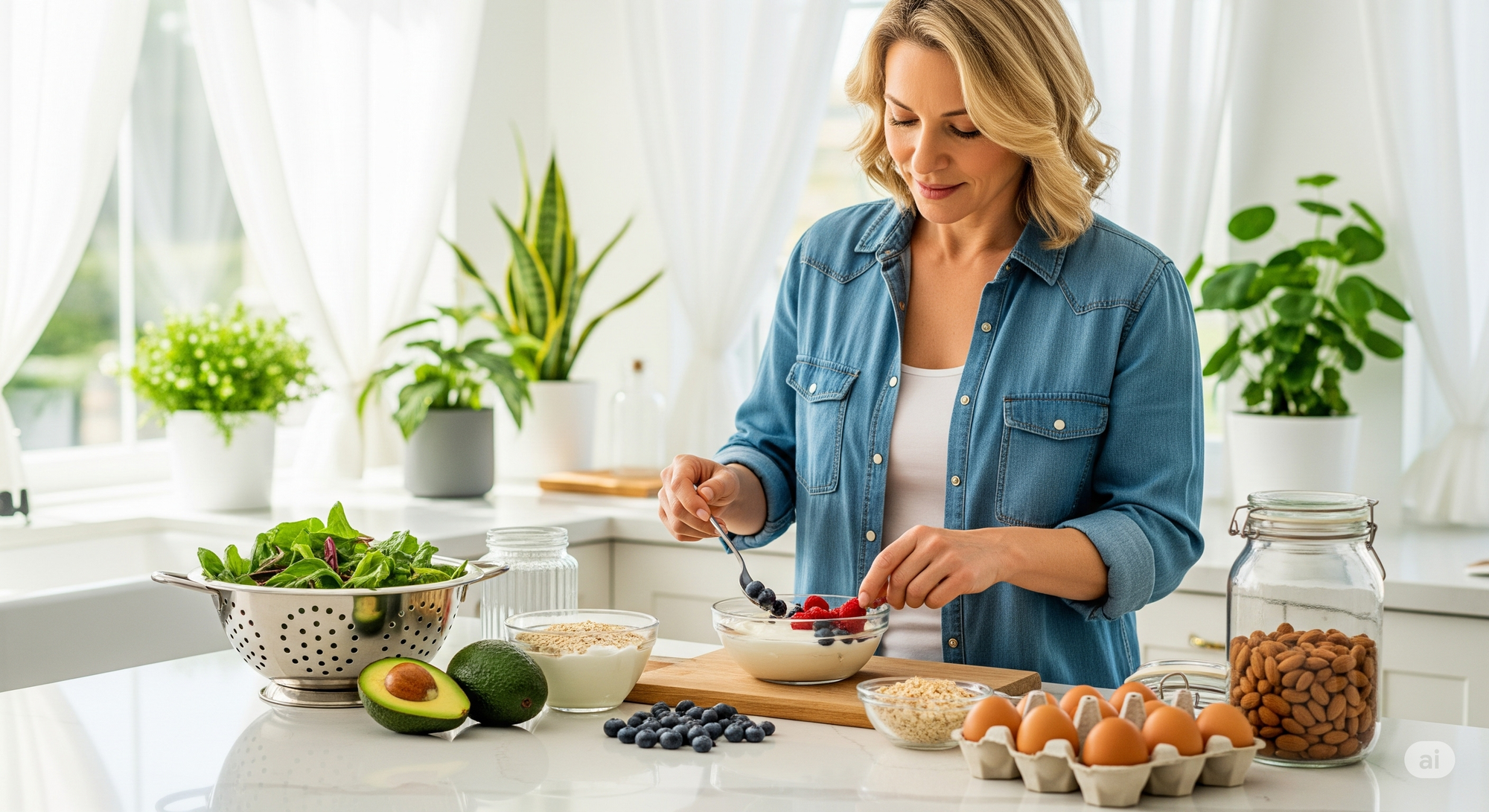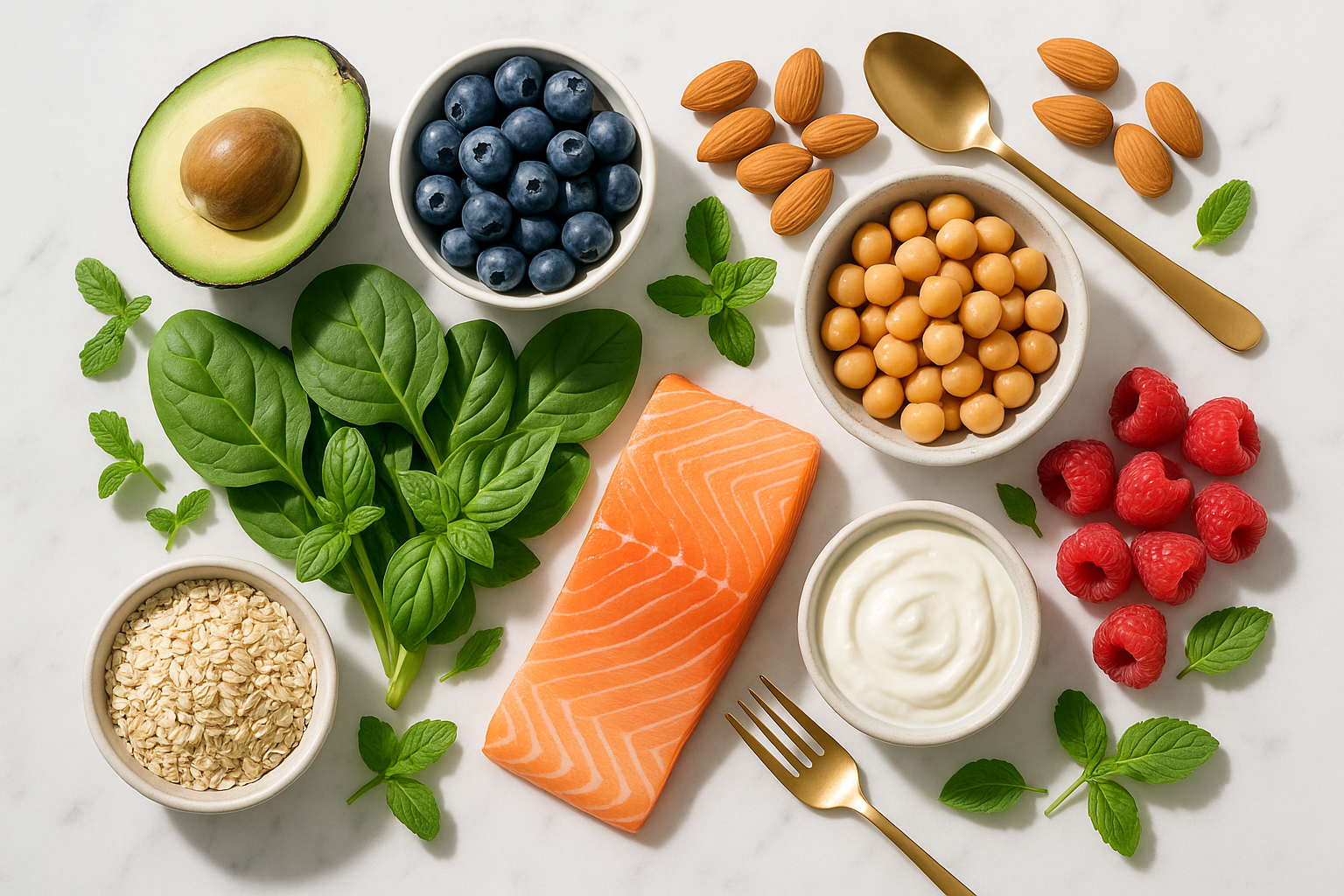11 Foods That Naturally Boost GLP-1 (Nature's Ozempic)

Let's be real for a moment. If you're reading this, you've probably done the math on GLP-1 medications like Ozempic, Wegovy, or Zepbound. Maybe your insurance said "no thanks" to covering that $1,000+ monthly price tag. Maybe you're on a waiting list that seems endless. Or perhaps you're simply curious about whether Mother Nature has her own version of these game-changing medications hiding in your grocery store.
Here's the thing: while no food will replicate the dramatic effects of prescription GLP-1 agonists (and anyone who tells you otherwise is selling something), science shows that certain foods can naturally nudge your body to produce more GLP-1. Think of it as giving your metabolism a gentle assist rather than hitting the turbo button.
What Exactly Is GLP-1, and Why Should You Care?
GLP-1 (glucagon-like peptide-1) is basically your body's built-in appetite manager and blood sugar stabilizer. When you eat, specialized cells in your intestines release this hormone, which then:
- Tells your brain "hey, we're full now"
- Slows down how quickly food leaves your stomach
- Helps your pancreas release the right amount of insulin
- Reduces those pesky hunger hormones
The medications everyone's talking about are synthetic versions that stick around much longer than your natural GLP-1 (which only lasts a few minutes). But here's the encouraging part: you can boost your natural production through what you eat.
The 11 Foods That Can Naturally Boost Your GLP-1 Levels
1. Avocados: The Creamy GLP-1 Booster
Yes, millennials were onto something with their avocado toast obsession. These green gems are packed with healthy fats and fiber – a combination that research suggests can increase GLP-1 secretion. The monounsaturated fats in avocados slow digestion, giving your intestinal cells more time to produce GLP-1.
Practical tip: Add half an avocado to your lunch salad or blend a quarter into your morning smoothie. The healthy fats also help you absorb fat-soluble vitamins from other foods.
2. Eggs: The Protein Powerhouse
Whole eggs, especially when eaten at breakfast, have been shown to increase GLP-1 levels more than carb-heavy morning meals. The high-quality protein triggers GLP-1 release, and the effect seems to last for hours after eating.
Practical tip: Try having 2 eggs for breakfast instead of cereal or toast. Scrambled, poached, or in a veggie omelet – your GLP-1 levels won't know the difference, but your hunger hormones will.
3. Greek Yogurt: The Probiotic GLP-1 Friend
Full-fat Greek yogurt does double duty. The protein content stimulates GLP-1 release, while the probiotics may help maintain the gut bacteria that influence GLP-1 production. Skip the low-fat versions – the fat content actually helps with satiety and hormone production.
Practical tip: Choose plain, full-fat Greek yogurt and add your own berries and a drizzle of honey. This avoids the blood sugar spike from pre-sweetened versions that can interfere with GLP-1's beneficial effects.
4. Leafy Greens: The Fiber Champions
Spinach, kale, collards, and other leafy greens are fiber superstars. According to research highlighted by NPR, dietary fiber is one of the most effective natural GLP-1 boosters. The fermentation of fiber in your gut produces short-chain fatty acids that stimulate GLP-1 secretion.
Practical tip: Aim for at least 2 cups of leafy greens daily. Throw spinach in your smoothie, make a big salad for lunch, or sauté greens as a dinner side.
5. Oats: The Slow-Release GLP-1 Trigger
Steel-cut or old-fashioned oats contain a special type of soluble fiber called beta-glucan. This fiber forms a gel-like substance in your gut that slows digestion and promotes sustained GLP-1 release. Instant oats? Not so much – the processing reduces the fiber content.
Practical tip: Make overnight oats with steel-cut oats, Greek yogurt, and berries. The combination of fiber, protein, and antioxidants creates a GLP-1-friendly breakfast that actually tastes good.
6. Legumes: The Sustained Energy Providers
Beans, lentils, and chickpeas are GLP-1 gold. They're packed with both protein and fiber, creating a one-two punch for hormone production. Studies show that people who eat legumes regularly have better appetite control and more stable blood sugar levels.
Practical tip: Add a half-cup of beans to your salad, make hummus your go-to snack, or try "Meatless Monday" with a lentil-based meal. Your gut (and GLP-1 levels) will thank you.

7. Nuts: The Satisfying Snack
Almonds, walnuts, and pistachios provide healthy fats, protein, and fiber – all nutrients that support GLP-1 production. The combination also means they're incredibly satisfying, helping you naturally eat less without feeling deprived.
Practical tip: Pre-portion nuts into small containers or bags (about 1/4 cup each) to avoid overdoing it. Pair them with an apple for an even better GLP-1 boost.
8. Fatty Fish: The Omega-3 Connection
Salmon, mackerel, and sardines rich in omega-3 fatty acids may enhance GLP-1 secretion. Some research suggests that omega-3s improve the sensitivity of GLP-1 receptors, making your body more responsive to the hormone you do produce.
Practical tip: Aim for fatty fish twice a week. Canned salmon or sardines count too – and they're budget-friendly natural GLP-1 foods that won't break the bank like those medications.
9. Berries: The Sweet GLP-1 Supporters
Blueberries, raspberries, and strawberries are lower in sugar than most fruits but high in fiber and polyphenols. These compounds may help maintain healthy gut bacteria that influence GLP-1 production. Plus, their natural sweetness can help curb sugar cravings.
Practical tip: Keep frozen berries on hand – they're just as nutritious as fresh and won't go bad. Add them to yogurt, oatmeal, or eat them as a dessert alternative.
10. Jerusalem Artichokes: The Prebiotic Powerhouse
Also called sunchokes, these knobby vegetables are incredibly rich in inulin, a prebiotic fiber that feeds beneficial gut bacteria. These bacteria produce short-chain fatty acids that stimulate GLP-1 release. Fair warning: start small with these, as they can cause gas if you eat too much too quickly.
Practical tip: Roast sliced Jerusalem artichokes with olive oil and herbs, or add them raw to salads for a crunchy texture. Start with a small serving (1/4 cup) and increase gradually.
11. Fermented Foods: The Gut Health Heroes
Kimchi, sauerkraut, kefir, and other fermented foods support the gut microbiome, which plays a crucial role in GLP-1 production. A healthy, diverse gut microbiome is associated with better GLP-1 response and overall metabolic health.
Practical tip: Add a small serving of fermented foods to one meal daily. Start with 2-3 tablespoons of sauerkraut on your sandwich or a small glass of kefir as an afternoon snack.
How to Build a GLP-1-Boosting Meal Plan
Now that you know which foods to focus on, let's talk practical application. Here's what a day of eating for natural GLP-1 support might look like:
Breakfast: Steel-cut oatmeal topped with Greek yogurt, berries, and chopped almonds Mid-morning snack: Apple slices with almond butter Lunch: Large salad with spinach, chickpeas, avocado, and grilled chicken Afternoon snack: Vegetable sticks with hummus Dinner: Baked salmon with roasted Jerusalem artichokes and sautéed kale Evening treat: Small bowl of berries with a dollop of Greek yogurt
The Reality Check: What to Expect
Let's have an honest conversation about expectations. Eating these natural GLP-1 foods won't give you the dramatic weight loss seen with medications like Ozempic or Wegovy. Those drugs increase GLP-1 levels by 10-15 times normal amounts and keep them elevated 24/7. Food can't do that.
What you CAN expect:
- Better appetite control throughout the day
- Fewer intense cravings
- More stable energy levels
- Gradual, sustainable weight loss (think 1-2 pounds per week)
- Improved overall health markers
- A grocery bill that's far less painful than medication costs
Making It Sustainable: Tips for Success
- Start slowly: Don't overhaul your entire diet overnight. Pick 2-3 foods from this list and incorporate them this week.
- Prep for success: Wash and chop vegetables on Sunday, pre-portion nuts, and cook a big batch of beans for the week.
- Focus on addition, not restriction: Instead of focusing on what you can't eat, get excited about adding these GLP-1-boosting foods.
- Track how you feel: Keep a simple journal noting your hunger levels, energy, and cravings. You'll likely notice improvements within 2-3 weeks.
- Be patient: Natural approaches take time. Give it at least 6-8 weeks before deciding if it's working for you.
The Combination Approach
Here's something important: you don't have to choose between natural approaches and medication. Many people successfully combine GLP-1-boosting foods with lower doses of medication, potentially reducing side effects and costs. Always discuss this with your healthcare provider.
Some people also find that starting with natural GLP-1 foods helps them develop healthier habits that make them more successful if they do eventually access medication.
Beyond Food: Other Natural GLP-1 Boosters
While food is our focus, these lifestyle factors also support healthy GLP-1 levels:
- Regular meal timing: Eating at consistent times helps regulate hormone production
- Adequate sleep: Poor sleep disrupts GLP-1 and other metabolic hormones
- Stress management: Chronic stress interferes with GLP-1 signaling
- Physical activity: Exercise independently supports GLP-1 production
The Bottom Line
Can foods really be "nature's Ozempic"? Not exactly – and that's okay. While these natural GLP-1 foods won't replicate the powerful effects of prescription medications, they offer a sustainable, affordable way to support your body's own appetite-regulating systems.
For many people, especially those who can't access or afford GLP-1 medications, focusing on these foods provides a realistic path forward. You might not lose 15% of your body weight in 6 months, but you can improve your health, feel more in control of your appetite, and yes, lose weight sustainably.
Remember, the best diet is one you can stick to long-term. These aren't exotic superfoods requiring a trust fund to afford – they're regular, wholesome foods that happen to support your body's natural GLP-1 production.
Whether you're using these foods as your primary strategy, combining them with medication, or preparing your body for eventual medication access, you're taking a positive step for your health. And unlike medications that you might need to stop due to shortages or cost, these foods will always be available at your local grocery store.
Start where you are, use what you have, and do what you can. Your body's GLP-1 system is ready to work with you – you just need to give it the right fuel.

